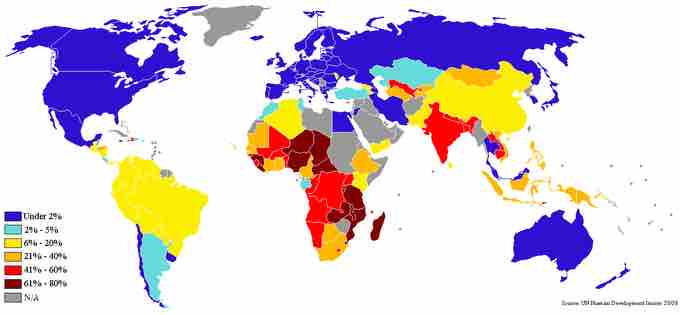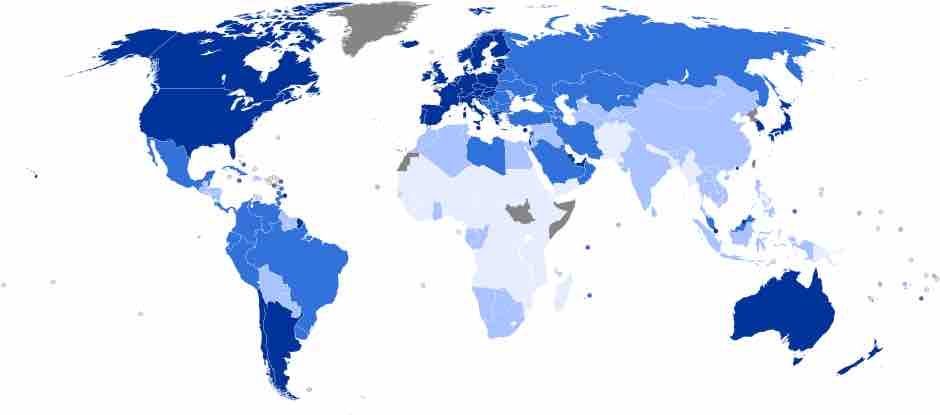Poverty describes the state of not having access to material resources, wealth, or income. The U.S. officially defines poverty using the poverty line, which is the official measure of those whose incomes are less than three times the approximate cost of a subsistence level food budget. This definition has been in use in the U.S. to track demographic changes and allocate welfare aid since the 1960s. Near poverty is when one earns up to 25% above the poverty line; put otherwise, a person near poverty has an income below 125% of the current poverty line. Absolute poverty is the level of poverty where individuals and families cannot meet food, shelter, warmth, and safety needs, while relative poverty refers to economic disadvantage compared to wealthier members of society. Extreme poverty is a severe lack of material possessions or money, defined by the World Bank as living on less than US $1.25 a day.
Poverty may correspond not only to lack of resources, but to lack of opportunity to improve one's standard of living and acquire resources. Life chances are an individual's access to basic opportunities and resources in the marketplace. Someone who is living in poverty but has high life chances may be able to improve their economic standing, while someone with low life chances will likely have a consistently low standard of living.
Billions of people around the world live in poverty, and often experience hunger, preventable illness, and low life expectancy as a result. A commonly used measure of national economic well-being is the GNI PPP. The GNI PPP is the gross national income of a country converted to international dollars using a factor called the purchasing power parity. In other words, GNI PPP lets you understand how much a person could buy with a given amount of money (in other words, a person's annual income), regardless of the country's currency. It enables comparisons between the relative wealth and poverty of countries — the higher a country's GNI PPP is, the better off the average person in that country is.
Comparing GNI PPPs makes clear that there is global economic stratification, or that countries are arranged in a hierarchy based on the unequal distribution wealth.The developed world is over 6 times wealthier than the less developed world. Globally, Africa has the highest level of poverty, with the average person earning less than 10% of what the average US citizen earns.

Percentage of Population Living on Less than $1/day
This map shows the percentage of national populations living on less than $1/day, adjusted for international purchasing power. This is a commonly used measure of poverty to allow international comparisons.

United Nations Human Development Index (HDI) Rankings for 2011
Human Development Index (HDI) is a measure of how much of a nation's wealth is invested into local services such as education and infrastructure. Countries with low HDI tend to be caught in a national cycle of poverty -- they have little wealth to invest, but the lack of investment perpetuates their poverty.